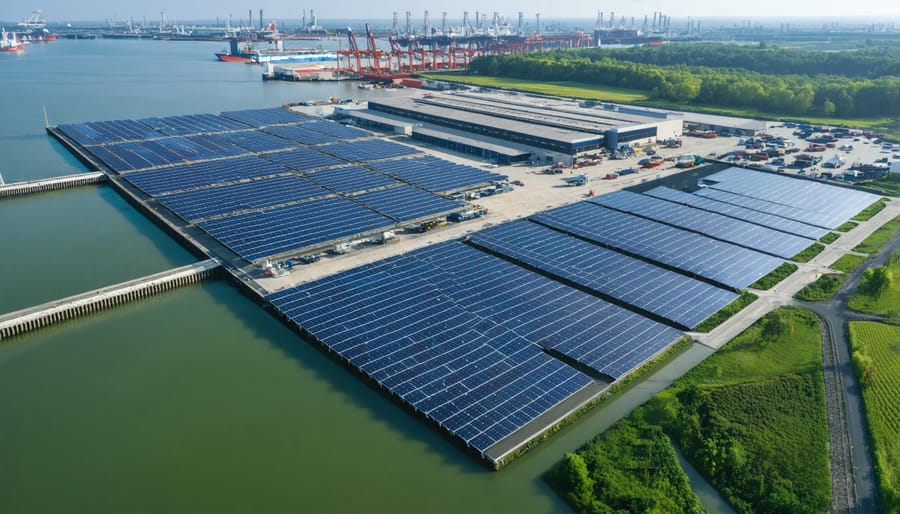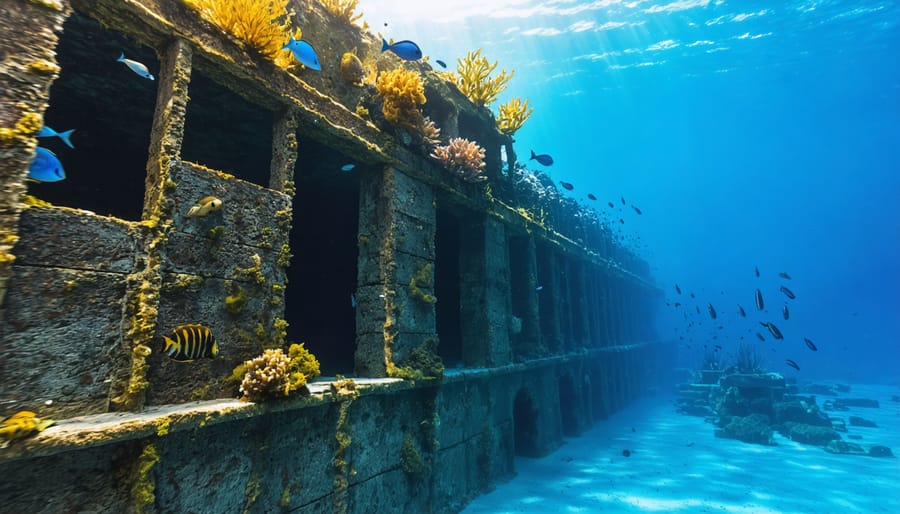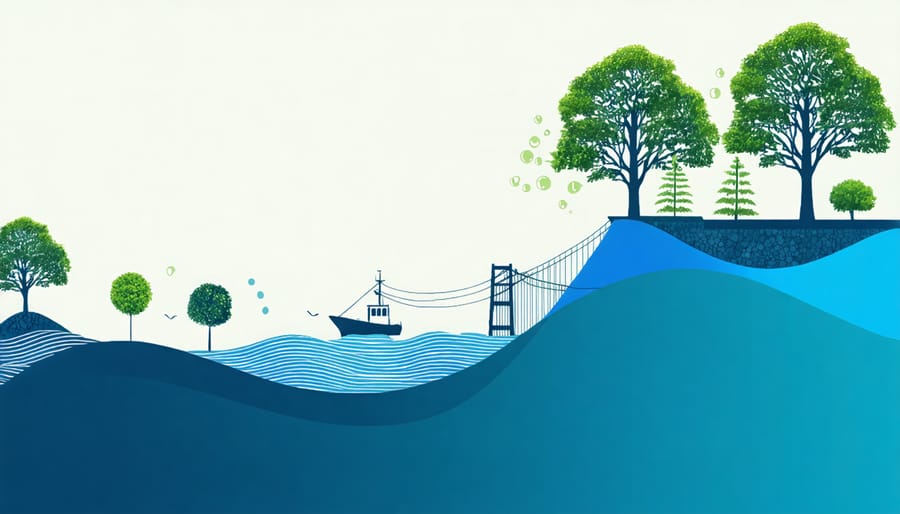
Beneath the waves lies humanity’s greatest challenge and most promising opportunity. The United Nations Sustainable Development Goal 14 (SDG 14) – “Life Below Water” – represents our global commitment to conserve and sustainably use our oceans, seas, and marine resources. With over 70% of Earth’s surface covered by water and more than 3 billion people depending directly on marine biodiversity for their livelihoods, the stakes couldn’t be higher.
Recent data from the United Nations Environment Programme reveals that 40% of our oceans are heavily affected by human activities, from plastic pollution to overfishing. Yet, amidst these challenges, innovative solutions and collaborative efforts are emerging worldwide. Marine protected areas have increased from 1% to nearly 8% of global coastal waters since 2000, demonstrating that positive change is possible through coordinated action.
This article explores the critical components of SDG 14, from protecting marine ecosystems to supporting sustainable fishing practices, while highlighting successful initiatives that are already making a difference. We’ll examine how governments, organizations, and individuals are working together to ensure our oceans remain healthy and productive for future generations. Whether you’re a marine scientist, policy maker, or concerned citizen, understanding and contributing to SDG 14’s goals is crucial for our planet’s future.
By combining scientific research, practical solutions, and community engagement, we can turn the tide on marine degradation and create a sustainable blue economy that benefits both humanity and ocean life.
The Critical Link Between SDG 14 and Marine Infrastructure
Key Targets of SDG 14
SDG 14 encompasses several crucial targets aimed at protecting marine ecosystems and promoting sustainable ocean management by 2030. A primary target focuses on preventing and significantly reducing marine pollution, particularly from land-based activities and plastic waste. The goal aims to sustainably manage and protect marine and coastal ecosystems, addressing ocean acidification impacts through enhanced scientific cooperation.
Another key target involves regulating harvesting practices and ending overfishing, implementing science-based management plans to restore fish stocks. The initiative also seeks to conserve at least 10% of coastal and marine areas through effective management systems and legal protection.
Economic considerations include prohibiting certain forms of fisheries subsidies that contribute to overcapacity and overfishing while supporting small-scale fishers. The targets emphasize increasing economic benefits to Small Island Developing States through sustainable marine resource management.
Research and technology transfer play vital roles, with targets focusing on increasing scientific knowledge, developing research capacity, and transferring marine technology. These efforts aim to support both marine biodiversity and improve the state of our oceans while enhancing the role of traditional knowledge in marine conservation efforts.
Infrastructure’s Impact on Marine Ecosystems
Coastal and marine infrastructure development continues to pose significant challenges to ocean ecosystems worldwide. From port expansions and coastal armoring to offshore energy installations, these construction projects often disrupt delicate marine habitats and migration patterns. Studies show that artificial lighting from coastal developments disorients sea turtle hatchlings and affects nocturnal marine species’ behavior patterns.
Dredging activities for port construction and maintenance particularly impact coral reefs and seagrass beds, reducing essential nursery grounds for numerous marine species. Research indicates that sediment plumes from dredging can extend several kilometers, reducing light penetration and smothering filter-feeding organisms.
However, innovative solutions are emerging. Marine biologists are developing eco-engineered infrastructure that incorporates habitat features into design plans. For instance, artificial reef structures integrated into breakwaters provide new homes for marine life while protecting coastlines. In Sydney Harbour, researchers have successfully created “living seawalls” that support biodiversity while maintaining structural integrity.
The key lies in balanced development approaches that prioritize both infrastructure needs and ecosystem preservation. Environmental impact assessments, when properly conducted and enforced, help minimize damage to marine habitats while allowing necessary coastal development to proceed sustainably.
Sustainable Marine Infrastructure Solutions

Eco-friendly Port Development
Modern ports are evolving to embrace ocean-friendly port development practices that protect marine ecosystems while maintaining operational efficiency. The Port of Rotterdam demonstrates this balance through its innovative floating solar panels and artificial reefs, which provide habitat for marine species while generating clean energy.
In Singapore, the Tuas Port project showcases how sustainable design can minimize environmental impact. The port utilizes advanced dredging techniques that reduce sediment dispersion, protecting nearby coral reefs. Additionally, they’ve implemented a comprehensive marine biodiversity monitoring program that tracks ecosystem health in real-time.
The Port of Vancouver’s ECHO Program (Enhancing Cetacean Habitat and Observation) represents another success story. By implementing vessel slowdown initiatives and underwater noise reduction strategies, they’ve significantly reduced the impact on endangered whale populations while maintaining port operations.
These case studies highlight several best practices:
– Integration of nature-based solutions like artificial reefs and mangrove restoration
– Implementation of renewable energy systems
– Use of low-impact construction methods
– Regular environmental monitoring and adaptation
– Collaboration with marine scientists and local communities
The success of these initiatives proves that economic growth and environmental protection can coexist in port development. These examples serve as blueprints for future projects, demonstrating how thoughtful design and innovative technologies can support both maritime commerce and marine conservation goals.
Artificial Reef Integration
Artificial reefs represent a powerful integration of marine infrastructure and biodiversity conservation, serving as vital tools in achieving the targets of SDG 14. These purpose-built underwater structures create new habitats for marine life while supporting coastal protection and sustainable fisheries management.
Recent innovations in artificial reef design have led to the development of eco-engineered solutions that specifically cater to local marine species. For instance, the deployment of 3D-printed reef structures in the Mediterranean has shown promising results, with coral recruitment rates increasing by up to 250% compared to traditional concrete blocks. These structures feature complex geometries that mimic natural reef formations, providing essential shelter for juvenile fish and invertebrates.
Marine biologists have documented remarkable success stories, such as the Shipwreck Trail in the Florida Keys, where decommissioned vessels now support thriving ecosystems. Dr. Maria Rodriguez, a leading marine ecologist, reports that these artificial reefs host over 150 species of fish and contribute significantly to local marine biodiversity.
Community involvement plays a crucial role in artificial reef programs. Volunteer diving teams assist in monitoring reef health and collecting data on species abundance. Local fishing communities benefit from improved fish stocks, while sustainable tourism activities generate alternative income sources, demonstrating how infrastructure development can align with marine conservation goals.
To maximize effectiveness, artificial reef projects must incorporate careful site selection, appropriate materials, and ongoing monitoring programs. This integrated approach ensures these structures contribute meaningfully to marine ecosystem restoration while supporting sustainable coastal development.

Green Technologies in Marine Construction
Recent innovations in marine construction have revolutionized how we build coastal and offshore infrastructure while protecting marine ecosystems. Leading the way are sustainable marine energy solutions that integrate renewable power generation with habitat creation, such as artificial reefs that double as wave energy converters.
Eco-concrete, enriched with marine-life-friendly minerals and textured surfaces, promotes the settlement and growth of coral and other marine organisms while maintaining structural integrity. These innovations demonstrate how circular economy principles in marine construction can transform traditional building practices.
Floating wetlands and living shorelines represent another breakthrough, combining natural ecosystem processes with engineering solutions. These structures use native vegetation and natural materials to protect coastlines while creating valuable habitat for marine species.
Biomimetic design principles are increasingly influential, with structures that mirror natural formations. For example, mangrove-inspired pylons feature complex root-like structures that dissipate wave energy while providing shelter for juvenile fish and invertebrates.
Smart materials that adapt to environmental conditions are also emerging, such as self-healing concrete that repairs cracks using bacterial processes, reducing maintenance needs and extending infrastructure lifespan while minimizing environmental disruption. These technologies demonstrate how innovation can align construction needs with marine conservation goals.
Success Stories and Real-World Impact
Global Implementation Cases
Several nations have demonstrated remarkable progress in implementing SDG 14 through innovative infrastructure projects. Norway’s marine protected areas (MPAs) showcase exemplary coastal ecosystem conservation, covering over 30% of their territorial waters. Their approach combines sustainable fishing practices with advanced monitoring systems, resulting in significant recovery of cod populations.
In the Pacific, Palau has established a nationwide marine sanctuary spanning 500,000 square kilometers. Their infrastructure includes advanced vessel monitoring systems and eco-friendly moorings that protect coral reefs while supporting sustainable tourism. This initiative has increased fish populations by 35% since implementation.
The Netherlands demonstrates excellence in sustainable port development through their “Building with Nature” program. Rotterdam Port’s innovative use of artificial reefs and floating wetlands has created thriving marine habitats while maintaining commercial operations. This approach has inspired similar projects in Singapore and Australia.
Indonesia’s Coral Triangle Initiative showcases regional cooperation, with marine infrastructure designed to protect biodiversity hotspots. Their system of artificial reefs and managed fishing zones has helped restore damaged ecosystems while supporting local livelihoods.
These cases demonstrate how nations can balance economic development with marine conservation, providing blueprints for other countries to follow in their SDG 14 implementation efforts.

Measurable Conservation Outcomes
The implementation of SDG 14 has yielded significant measurable outcomes in marine conservation efforts worldwide. Recent data shows a 32% increase in protected marine areas since 2015, now covering approximately 7.74% of the global ocean. This expansion has led to documented recoveries in various marine species populations, with notable success stories including the humpback whale population increasing by 10% annually in several regions.
Coral reef restoration projects have demonstrated remarkable progress, with successful rehabilitation of over 230,000 square meters of reef systems in the Indo-Pacific region alone. These restored areas now support 50-60% more marine biodiversity compared to degraded sites. Additionally, sustainable fishing practices have resulted in a 15% reduction in overfishing in managed zones, contributing to the recovery of commercial fish stocks.
Plastic pollution reduction initiatives have shown promising results, with coastal cleanup efforts removing over 100 million pounds of debris annually. Marine water quality monitoring indicates a 25% improvement in coastal areas where stringent pollution controls have been implemented. Seagrass meadow restoration projects have successfully rehabilitated over 50,000 hectares globally, sequestering significant amounts of carbon and providing crucial habitat for marine species.
The establishment of no-take zones has led to an average 446% increase in fish biomass within protected areas, demonstrating the effectiveness of marine protected areas in ecosystem recovery. These quantifiable achievements provide concrete evidence of progress toward SDG 14’s targets while highlighting the potential for continued success through sustained conservation efforts.
Future Directions and Opportunities
The future of marine conservation and sustainable development presents both exciting opportunities and significant challenges. Emerging technologies like artificial intelligence and satellite monitoring are revolutionizing how we track ocean health and enforce marine protection measures. These innovations enable real-time monitoring of fish populations, coral reef conditions, and illegal fishing activities, making conservation efforts more effective and targeted.
Sustainable aquaculture is poised to play a crucial role in meeting global food demands while reducing pressure on wild fish stocks. Advanced farming techniques, including integrated multi-trophic aquaculture systems, show promise in producing seafood with minimal environmental impact. These systems combine different species that work together in a sustainable ecosystem, maximizing resource efficiency.
Blue carbon initiatives are gaining momentum as a powerful tool for combating climate change. Coastal ecosystems like mangroves, seagrass beds, and salt marshes are increasingly recognized for their superior carbon sequestration capabilities. Investment in protecting and restoring these habitats offers dual benefits: biodiversity conservation and climate change mitigation.
The growth of sustainable marine tourism presents another promising direction. Eco-friendly coastal development projects are demonstrating how tourism can coexist with marine conservation, creating economic opportunities while protecting marine ecosystems. These initiatives often include educational components that raise awareness about ocean conservation among visitors.
Looking ahead, international cooperation will be crucial. The proposed global treaty on marine plastic pollution and expanding networks of marine protected areas signal growing commitment to ocean conservation. However, success will require sustained funding, stronger enforcement mechanisms, and improved coordination between nations.
Community-based conservation programs are expected to expand, recognizing that local stakeholders are essential for successful marine protection. These initiatives combine traditional knowledge with scientific approaches, creating more effective and socially acceptable conservation strategies.
The challenge lies in balancing economic development with marine protection. Innovative financing mechanisms, including blue bonds and carbon credits for marine ecosystems, could provide the necessary resources for large-scale conservation efforts while creating sustainable economic opportunities for coastal communities.
The preservation of our oceans requires immediate and sustained action from all sectors of society. Throughout this exploration of UN Sustainable Development Goal 14, we’ve seen how sustainable marine infrastructure plays a crucial role in protecting marine ecosystems while supporting economic growth. The challenges are significant, but solutions exist through innovative technologies, thoughtful urban planning, and collaborative international efforts.
By implementing sustainable port facilities, establishing marine protected areas, and developing eco-friendly coastal infrastructure, we can create a harmonious relationship between human development and ocean conservation. The success stories from various coastal nations demonstrate that economic progress and marine preservation can coexist when guided by proper planning and commitment.
As we move forward, individual and collective action remains vital. Whether through supporting local marine conservation projects, making informed consumer choices, or advocating for sustainable marine policies, everyone can contribute to achieving SDG 14’s objectives. The time to act is now – our oceans’ health directly impacts global food security, climate regulation, and countless livelihoods.
Join the movement by engaging with local marine conservation groups, supporting sustainable fishing practices, and staying informed about marine protection initiatives. Together, we can ensure a sustainable future for our oceans and the billions who depend on them.
jessica
Ava Singh is an environmental writer and marine sustainability advocate with a deep commitment to protecting the world's oceans and coastal communities. With a background in environmental policy and a passion for storytelling, Ava brings complex topics to life through clear, engaging content that educates and empowers readers. At the Marine Biodiversity & Sustainability Learning Center, Ava focuses on sharing impactful stories about community engagement, policy innovations, and conservation strategies. Her writing bridges the gap between science and the public, encouraging people to take part in preserving marine biodiversity. When she’s not writing, Ava collaborates with local initiatives to promote eco-conscious living and sustainable development, ensuring her work makes a difference both on the page and in the real world.
